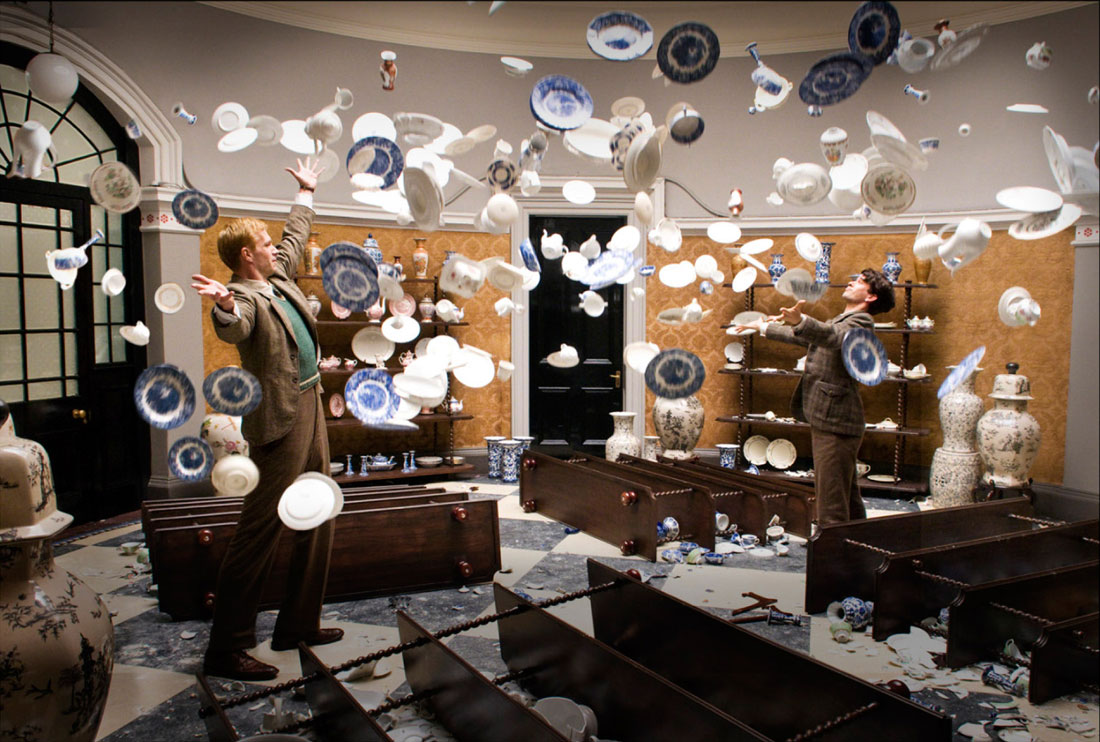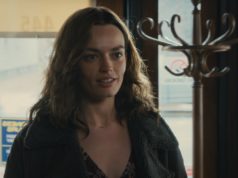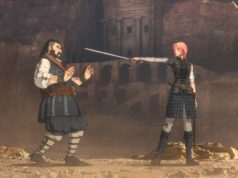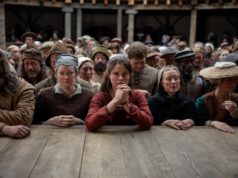Call a novel “unfilmable,” and you’re only waving a red flag in the face of certain filmmakers. David Mitchell’s novel Cloud Atlas has been called that for good reason — it’s an exercise in literary derring-do, containing six separate yet linked stories that span continents and centuries, and it’s written in a wild variety of prose styles and techniques. The task of wrangling this monster into a movie has been taken up by no less than three directors: Run Lola Run’s Tom Tykwer and the Matrix series’ Andy and Lana (formerly Larry) Wachowski. They made their names with action movies, and yet they all have a philosophical bent, which has gotten them all in trouble in the past. Here the material plays to their strengths. The screen version of Cloud Atlas isn’t my favorite movie of the year, yet in many ways it’s the most remarkable. There are several hundred thousand reasons why it shouldn’t work, and yet somehow it does.
In 1849, an American lawyer (Jim Sturgess) sailing in the South Pacific finds an aboriginal tribesman (David Gyasi) who has stowed away onboard. In 1936 Edinburgh, a bisexual music student (Ben Whishaw) becomes secretary to an elderly English composer (Jim Broadbent) who can no longer write down the music in his mind. In 1973, a San Francisco investigative reporter (Halle Berry) digs up dirt on a nuclear energy company that’s willing to kill to protect its profits. In present-day London, a book publisher (Broadbent again) finds his brother (Hugh Grant) conspiring to lock him away in a nursing home. In 2144, a Korean cloned “fabricant” (Bae Doo-na) suddenly develops self-awareness, even though she has been genetically engineered for mindless slave labor. And in post-apocalyptic 24th-century Hawaii, an agent from a superior race (Berry again) must work with a lowly goatherder (Tom Hanks) to save the remnants of humanity.
Whew! The filmmakers dispense with Mitchell’s unorthodox Russian-doll structure, instead switching frantically yet logically between plots. The publisher’s flight to escape his nursing home is intercut with the reporter fleeing an assassin (Hugo Weaving). The tone of these two plotlines is markedly different; the 1975 story is a taut thriller while the present-day story is a wacky farce. It should make for disjointed viewing, but instead the plots comment on and strengthen each other. The present-day story serves as welcome comic relief, yet on its own its broad tone would probably be intolerable. The same goes for the post-apocalyptic one, which is performed in a pidgin dialect that doesn’t exist. The other storylines keep that one from becoming too much, though they can’t mitigate the unfortunate character of a demon spirit (Weaving again) who appears to the goatherd to voice his suspicions. The action in the various stories rises and falls in unison, creating an oddly consistent overall tone.
The same actors pop up in multiple stories playing various roles of all ages, different races, and both genders. The filmmakers’ intent is to draw parallels between characters. They fail pretty comprehensively at it, and the white actors portraying Koreans all look like Vulcans instead. Still, it’s fun to see the 33-year-old Bae portray a middle-aged Mexican woman and Hanks a Scottish gangster who publicly murders a book critic for giving his memoir a bad review. Berry and Grant draw an enviable set of roles (among the latter’s: a racist American preacher and a blood-drinking warrior chief), but it’s the great Broadbent who comes off best here, portraying the composer as a treacherous vampire hiding under a doddering exterior and the publisher as a comically bewildered soul.
The material addresses the filmmakers’ ongoing concerns: power and enslavement; the blurring of class, racial, and gender lines; the importance of storytelling to order and control our sense of reality. Ultimately, though, its message, which pierces through the soothing rhythms of the different storylines, is that we are all connected to one another and that our consciousness is a miracle in this vast universe. Other movies have told us the same thing, yet I found Cloud Atlas to be more convincing in its vision than either Babel or The Tree of Life, even if its considerable visual splendors can’t match Terrence Malick’s. The movie’s coherence is a great feat of engineering, and like all great feats of engineering, you can tell where its heart is. More than a decade since either Tykwer or the Wachowskis rattled the cinematic world, they’ve now teamed up for one of the unlikelier creative resurgences we’ve seen in recent years. As a wise philosopher said in The Matrix, “Whoa!”
[box_info]
Cloud Atlas
Starring Tom Hanks, Halle Berry, Jim Broadbent, Jim Sturgess, Ben Whishaw, and Bae Doo-na. Written and directed by Tom Tykwer, Andy Wachowski, and Lana Wachowski, based on David Mitchell’s novel. Rated R.
[/box_info]












